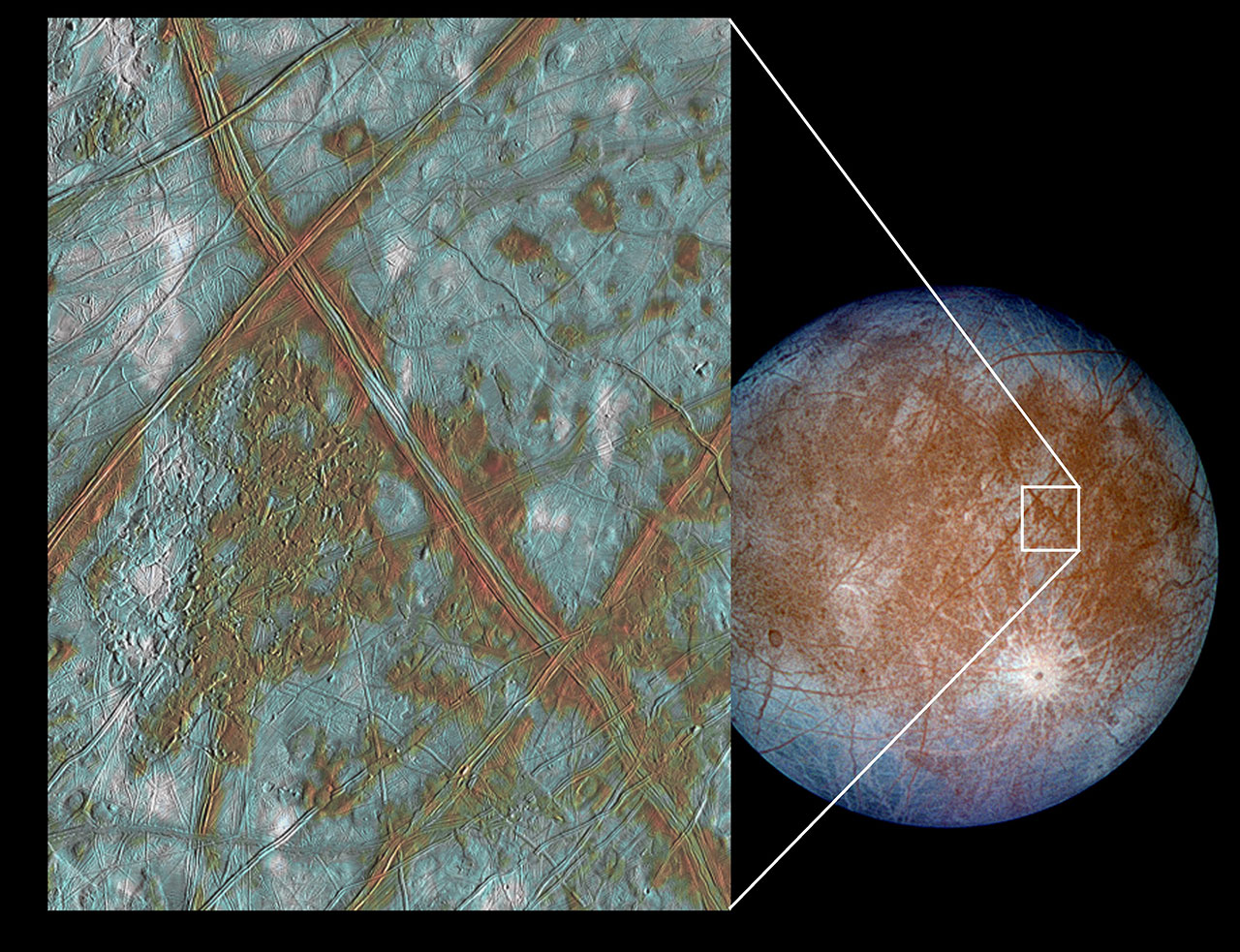
Image courtesy of NASA/JPL/University of Arizona
 Copyright © Michael Richmond.
This work is licensed under a Creative Commons License.
Copyright © Michael Richmond.
This work is licensed under a Creative Commons License.
There were two items in the news this week that seemed relevant to this course. Let's discuss them briefly.
Contents
The Europa Clipper is a spacecraft designed to explore the properties of one of Jupiters big moons, Europa. This body is intriguing because its icy surface is criss-crossed by a series of long cracks.

Image courtesy of
NASA/JPL/University of Arizona
Our current measurements of the bulk properties of Europa suggest that it might feature a region of liquid water, several kilometers below a thick surface layer of frozen ices. The energy to keep this region liquid is provided by the tidal forces on Europa from Jupiter -- any residual heat from its formation would have been lost to radiation long ago.
There is some evidence, provided by observations by HST, that occasionally, liquid water from the interior might spray out from cracks in the surface and fly into space as a vapor.
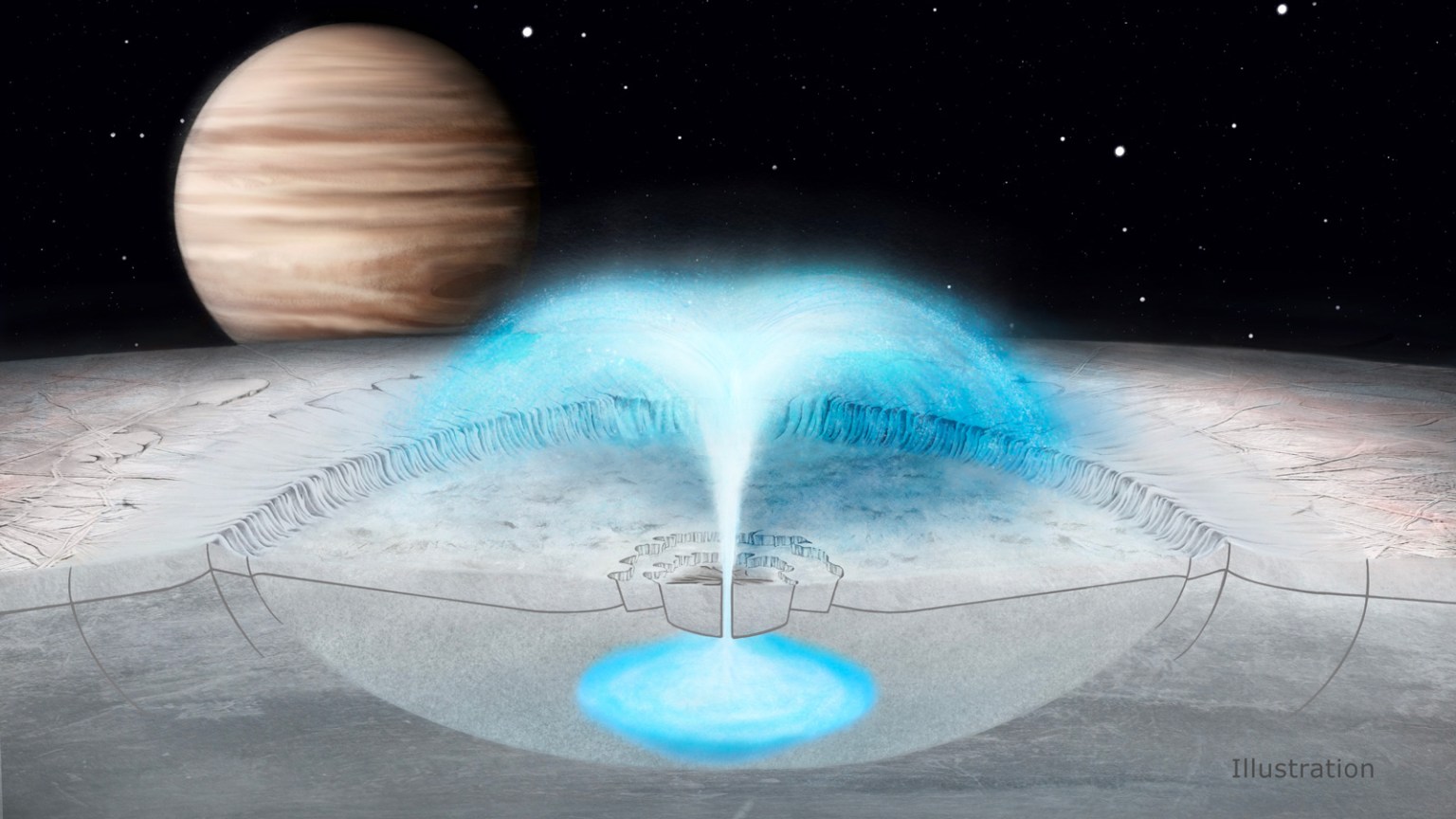
Artist's illustration of a vapor plume on Europa
thanks to
NASA and Justice Wainwright
Europa Clipper will orbit around Jupiter and fly past Europa around 50 times over the course of three years. Some of its passes will be so low -- only 25 km above the ice -- that the spacecraft's instruments might, just might, encounter and record the properties of materials ejected from Europa's surface or interior.
Barnard's Star is of interest to astronomers for several reasons:
Since it is so close, it is a logical system in which to search for planets. There have been several claims to have found planets circling Barnard's Star over the past century,
but they have not panned out.
Until, perhaps, now? This week saw the publication of a detection based on radial velocity measurements.
This team used radial velocity measurements made with the ESPRESSO spectrometer on the 8.2m VLT over the course of four years, plus some data collected by other telescopes, to detect a VERY small periodic signal in the radial velocity of Barnard's Star. After a lot of very careful calibration and the subtraction of various systematic effects, they find this 3.15-day pattern:
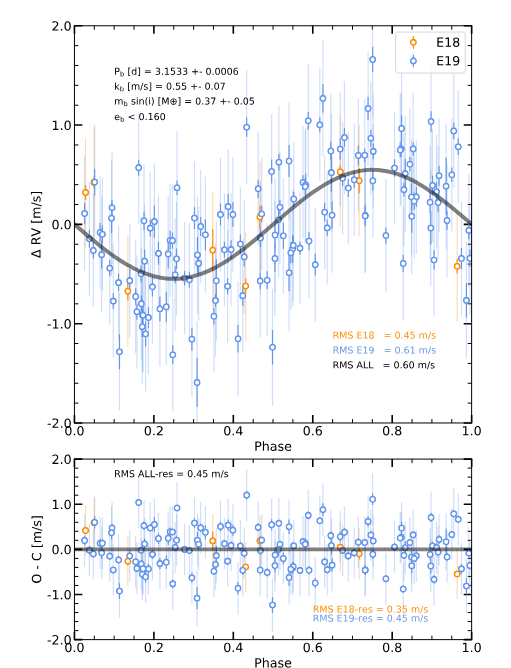
Figure 14. taken from
Gonzalez Hernandez, J. I. et al., A&A 690, A79 (2024)
Q: What is the amplitude of these variations?
The variations are tiny, indeed: only about 55 cm per second! Since the mass of Barnard's Star is so small, just 0.16 M☉, this orbital motion indicates that the orbiting body must have a mass of about m = 0.37 mE. It is currently one of the least-massive exoplanets to have been discovered.
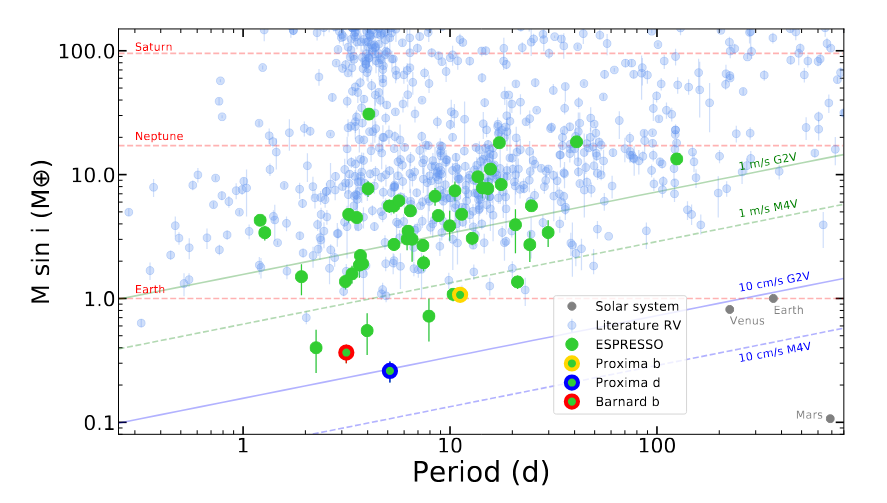
Figure 17. taken from
Gonzalez Hernandez, J. I. et al., A&A 690, A79 (2024)
This was no easy effort. As the team writes,
ESPRESSO has gone beyond the Earth mass frontier, thus starting to discover sub-Earth mass planets orbiting nearby stars to our Sun such as Proxima Cen and Barnard's star, although still at short orbital periods. These discoveries have required significant investment with more than 100 measurements in an 8-m class telescope. The endeavor of filling the region in Fig. 17 below the 1 m s-1 precision limit at periods larger than 10 d towards finding long-period Earth-like planets would require many years of continuous, well planned, sufficiently sampled observations and a deep understanding of magnetic activity of every nearby star. This would open the opportunity to sample the habitable zone of nearby stars with the aim of further investigating the atmosphere of Earth-like planets in the future with ground-based facilities such as ANDES at ELT (Marconi et al. 2022) and with space missions such as LIFE (Quanz et al. 2022).
What about other planets in the system? Gonzalez-Hernandez et al. use data collected by Gaia and Hipparcos to rule out planets with masses greater than the Earth's at orbital radii from about 2 to 10 AU.
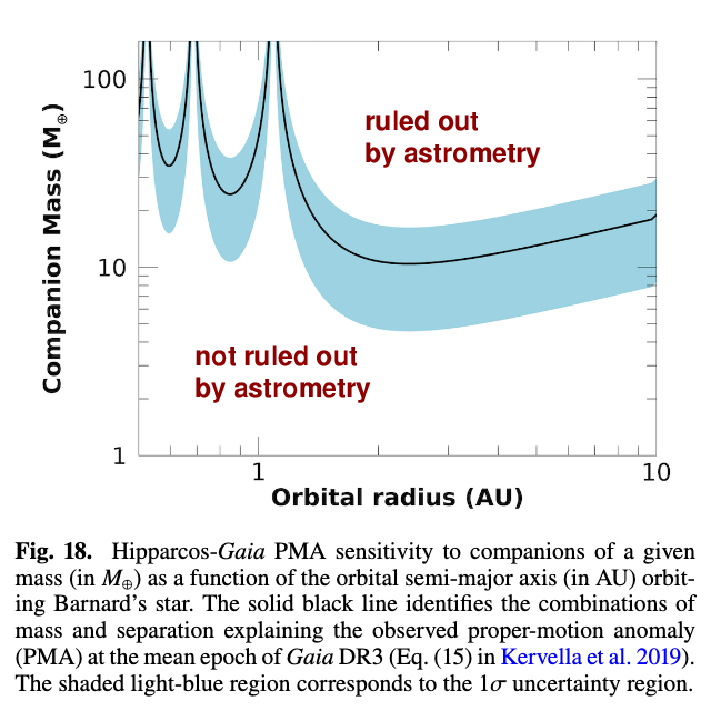
Figure 18. modified slightly from
Gonzalez Hernandez, J. I. et al., A&A 690, A79 (2024)
If they dig deeper into the noise of their radial velocity measurements, however, they find hints of additional short-period signals, with periods of 2.34, 4.12, and 6.74 days, all with masses less than half of the Earth's. They raise the possiblity that Barnard's Star could host a system of four small planets; none, however, fall within the so-called habitable zone.
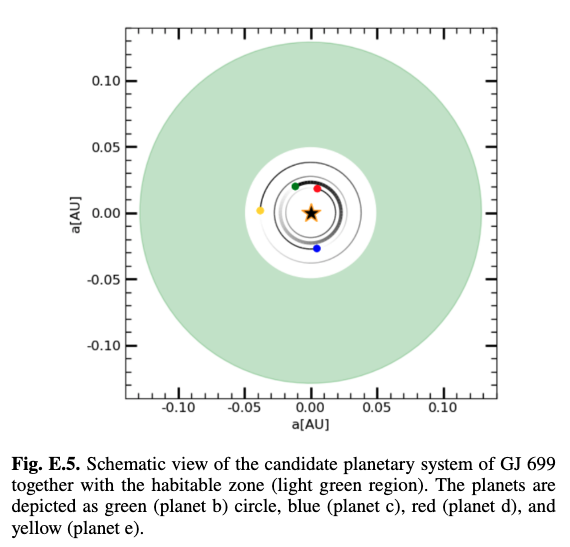
Figure E.5. taken from
Gonzalez Hernandez, J. I. et al., A&A 690, A79 (2024)
 Copyright © Michael Richmond.
This work is licensed under a Creative Commons License.
Copyright © Michael Richmond.
This work is licensed under a Creative Commons License.